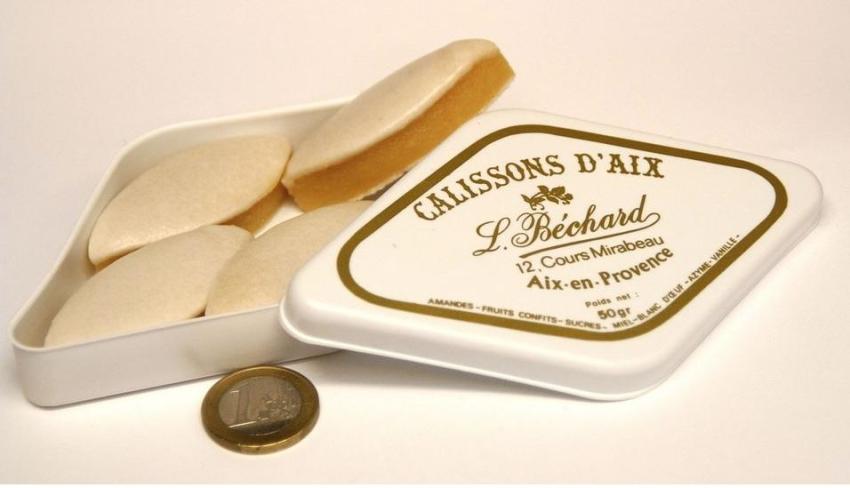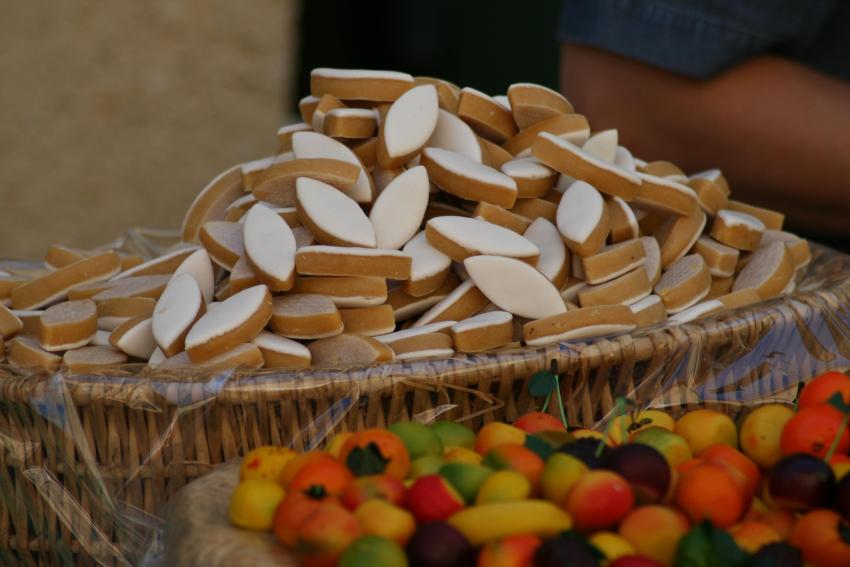- Read offline
- Access all content
- Use the in-app Map to find sites, and add custom locations (your hotel...)
- Build a list of your own favourites
- Search the contents with full-text search functionality
- ... and more!
calissons
luxury melon sweeties from Aix

Calissons have been made in Aix since the 15th century, during the time of Good King René of Provence. They are made from candied melon, blanched almonds and candiend orange zest, flavoured with orange blossom water and iced with glace royale (powdered sugar and egg whites), then laid out on papier azyme and cut into almond shapes.
Originally they were blessed in church and distributed in thanksgiving after plagues, and today they are still annually blessed in Aix’s church of St-Jean-de-Malte.

Food historians believe they may have originated as marzipan sweets in medieval Venice, and when Venice occupied Crete they became known as kalitsounas, hence ‘calissons’. Others believe the name comes from little calice (Communion chalice) because of their religious association.
But the most charming story is the legend that the King René’s confectioner invented these delicacies to delight Queen Jeanne on her wedding day, and she was the one who named them ‘di calin soun" (‘they are cuddly’ in Provençal).
There’s a new kind on the block as well, called Califleurs à la Rose et à la Violette: rose and violet-scented calissons made with crystalized flowers by Confiserie Florian in the Gorges du Loup.
Calissons have been IGP since 2002 and are one of the famous Thirteen Desserts served at Christmas in Provence.
Images by jean-louis zimmermann, Mathsci, GNU Free Documentation License

